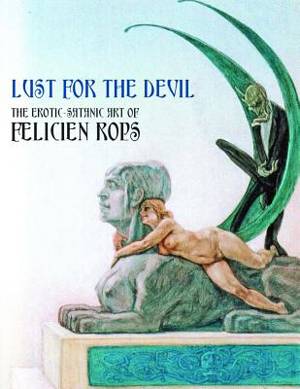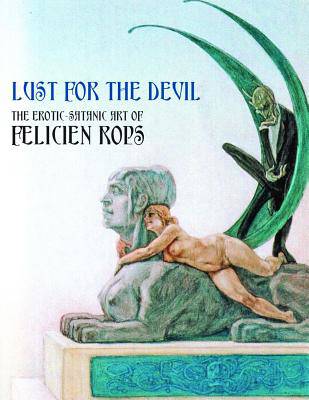
- Afhalen na 1 uur in een winkel met voorraad
- Gratis thuislevering in België vanaf € 30
- Ruim aanbod met 7 miljoen producten
- Afhalen na 1 uur in een winkel met voorraad
- Gratis thuislevering in België vanaf € 30
- Ruim aanbod met 7 miljoen producten
Zoeken
€ 23,95
+ 47 punten
Omschrijving
The first true flowering of Satanism in erotic art came with the Belgian artist Felicien Rops (1833-1898). Rops, who had met Charles Baudelaire in Paris in 1864 and subsequently become a devoted disciple, thereafter commingled elements of death, prostitution and the Satanic in his work, particularly in his 5-picture series Les Sataniques of 1882. Pictures in this series such as The Sacrifice and Calvary are clear and explicit representations of Black Mass and Satanism which still retain their original power to shock and disturb. These images, as well as the others in Les Sataniques, can be found in LUSTe ^FORe ^THEe ^DEVIL, which collects around 80 of Rops' most outlandish and confrontational works, including a section of 30 colour plates.
Also to be found here are images of death and corporeal dissolution, ranging from The Death Penalty to The Dancing Corpse; images of prostitution and addiction, such as The Absinthe Drinker and Human Trash; and numerous examples of Rops' book illustrations, reproduced in editions of decadence and diabolism that include Paul Verlaine, Josephin Peladan, and Jules Barbey d'Aurevilly's Les Diaboliques. Present too are a number of images of religious perversion, as well as several foregrounding Rops' trademark iconography -- the evil and controlling power of women -- ranging from The Puppet Mistress to variations of Naturalia, whose semi-defleshed subject, the "Diabolic Female", displays her fearful bone vulva smeared with blood.
These 80 images between them display the full range of Felicien Rops' darkest subject matter, revolving around his Baudelairean fusion of sex, death and Satan; they also run the gamut of the artistic techniques Rops employed, from oil painting and etching to pencils, pastels, and watercolours; and finally they reveal both the driving obsessions and skills of an artist whose reputation now places him as a foremost innovator of the 19th century.
Also to be found here are images of death and corporeal dissolution, ranging from The Death Penalty to The Dancing Corpse; images of prostitution and addiction, such as The Absinthe Drinker and Human Trash; and numerous examples of Rops' book illustrations, reproduced in editions of decadence and diabolism that include Paul Verlaine, Josephin Peladan, and Jules Barbey d'Aurevilly's Les Diaboliques. Present too are a number of images of religious perversion, as well as several foregrounding Rops' trademark iconography -- the evil and controlling power of women -- ranging from The Puppet Mistress to variations of Naturalia, whose semi-defleshed subject, the "Diabolic Female", displays her fearful bone vulva smeared with blood.
These 80 images between them display the full range of Felicien Rops' darkest subject matter, revolving around his Baudelairean fusion of sex, death and Satan; they also run the gamut of the artistic techniques Rops employed, from oil painting and etching to pencils, pastels, and watercolours; and finally they reveal both the driving obsessions and skills of an artist whose reputation now places him as a foremost innovator of the 19th century.
Specificaties
Betrokkenen
- Auteur(s):
- Uitgeverij:
Inhoud
- Aantal bladzijden:
- 96
- Taal:
- Engels
Eigenschappen
- Productcode (EAN):
- 9781902588872
- Verschijningsdatum:
- 30/04/2013
- Uitvoering:
- Paperback
- Formaat:
- Trade paperback (VS)
- Afmetingen:
- 216 mm x 279 mm
- Gewicht:
- 453 g

Alleen bij Standaard Boekhandel
+ 47 punten op je klantenkaart van Standaard Boekhandel
Beoordelingen
We publiceren alleen reviews die voldoen aan de voorwaarden voor reviews. Bekijk onze voorwaarden voor reviews.











